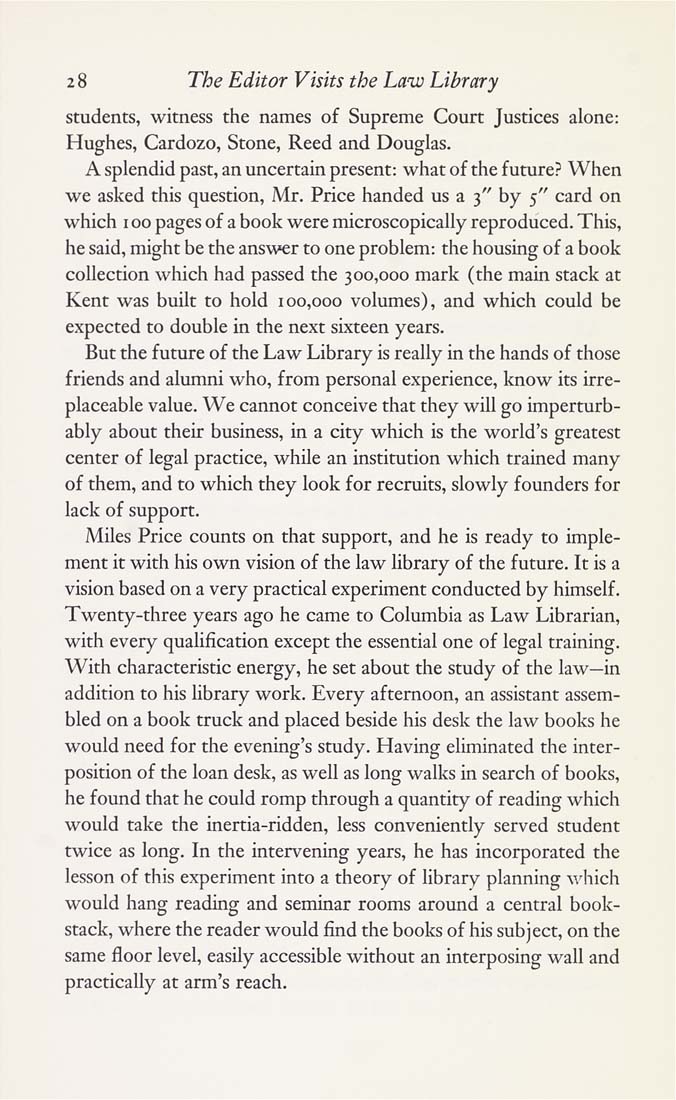Columbia Library columns (v.2(1952Nov-1953May))
(New York : Friends of the Columbia Libraries. )
|
||
|
|
|
|
| v.2,no.3(1953:May): Page 28 |

28 The Editor Visits the Law Library students, witness the names of Supreme Court Justices alone: Hughes, Cardozo, Stone, Reed and Douglas. A splendid past, an uncertain present: what of the future? When we asked this question, Mr. Price handed us a 3" by 5" card on which 100 pages of a book were microscopically reproduced. This, he said, might be the answer to one problem: the housing of a book collection which had passed the 300,000 mark (the main stack at Kent was built to hold 100,000 volumes), and which could be expected to double in the next sixteen years. But the future of the Law Library is really in the hands of those friends and alumni who, from personal experience, know its irre¬ placeable value. We cannot conceive that they will go imperturb- ably about their business, in a city which is the world's greatest center of legal practice, while an institution which trained many of them, and to which they look for recruits, slowly founders for lack of support. Miles Price counts on that support, and he is ready to imple¬ ment it with his own vision of the law library of the future. It is a vision based on a very practical experiment conducted by himself. Twenty-three years ago he came to Columbia as Law Librarian, with every quahfication except the essential one of legal training. With characteristic energy, he set about the study of the law—in addition to his library work. Every afternoon, an assistant assem¬ bled on a book truck and placed beside his desk the law books he would need for the evening's study. Having eliminated the inter¬ position of the loan desk, as well as long walks in search of books, he found that he could romp through a quantity of reading which would take the inertia-ridden, less conveniently served student twice as long. In the intervening years, he has incorporated the lesson of this experiment into a theory of library planning which would hang reading and seminar rooms around a central book- stack, where the reader would find the books of his subject, on the same floor level, easily accessible without an interposing wall and practically at arm's reach. |
| v.2,no.3(1953:May): Page 28 |







